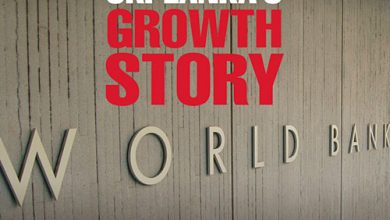ECONOMIC OUTLOOK
CRUNCHING THE NUMBERS
Shiran Fernando scrutinises the numbers that point to the future of the economy
The impact of COVID-19 is becoming somewhat clearer than it was a few months back. As economies reopen and return to a sense of normalcy, there are now concerns of second or third waves of new coronavirus infections across the world.
While the economic fallout has been immediate and severe, there are silver linings in that we may be witnessing the initial stages of a recovery. Nevertheless, the risk of a second or third wave is putting a damper on the growing optimism.
MONETARY POLICY As highlighted previously, the lack of fiscal space in the country and a national budget for 2020 has prevented Sri Lanka from announcing a major fiscal stimulus package similar to that of other nations such as India, Japan and Singapore.
Countries that did not announce large relief packages in late March or April have subsequently announced such measures in May and June. Sri Lanka on the other hand, has relied on monetary policy relief with the Central Bank of Sri Lanka (CBSL) easing policy rates and the Statutory Reserve Ratio (SRR) to inject more liquidity into the market.
An initial Rs. 50 billion refinancing facility provided by CBSL has since been expanded to 150 billion rupees with a credit guarantee scheme also in place. This could accelerate the pace at which relief is provided as the Central Bank would now bear the credit risk of these new loans.
INDEX REBOUND The Purchasing Managers’ Index (PMI) for manufacturing and services recorded a sharp rebound in May. This index is considered a leading indicator in terms of the health of the two aforementioned sectors.
Indeed, the manufacturing sector PMI rebounded to 49.3 index points from 24.2 while the PMI for the services sector rose to 43.1 index points from 29.8. While the PMI remains under 50 (a level above 50 indicates that the sector is expanding on a month on month basis), the increase in May was due to higher production post the resumption of activities during the month.
This trend is expected to have been carried into June and July, and the PMI for manufacturing could soon return to pre-COVID levels.
Globally as well, there’s been a broad improvement in manufacturing. Business surveys similar to the local PMI indicate an improvement in Europe and Asia in June compared to the lows of April and May. For example, IHS Markit’s final Eurozone Manufacturing PMI moved closer to the 50 mark in June.
DATA ANALYSIS Since data for the period between March and June is now available, we can examine the impact and reflect on how this would evolve if Sri Lanka were to be affected by a second wave of COVID-19.
The decline in the country’s gross official dollar reserves is an indicator that warrants concern. Between end-February and end-May, reserves fell by US$ 1.4 billion from 7.9 billion dollars to US$ 6.5 billion. About half of this decline was recorded in May amid the maturing of Sri Lanka Development Bonds and sovereign bond interest payments.
A declining trend is of concern given that Sri Lanka may not be able to access international capital markets anytime soon and is yet to receive inflows from the IMF COVID-19 response facility.
EXTERNAL SECTOR On the trade front, Sri Lanka has experienced mixed results. Exports fell in March and April to US$ 656 million and 282 million dollars respectively but rebounded to US$ 606 million in May.
The sharp rise in May is due to the export of personal protective equipment (PPE) to the US market. Imports also fell in April but not at the same pace as the decline in exports.
With no tourist arrivals from mid-March onwards amid the closure of the airports, Sri Lanka has not received any inflows from this source of dollar earnings.
Adding to the pressure, there’s been a decrease in remittances. While remittances fell by 32 percent year on year in April, they recovered in May to record only a 14 percent decline compared to the corresponding month of 2019. This will be a crucial variable when it comes to containing the current account deficit.
The next few months could be volatile amid zero foreign departures for employment being recorded in the last few months, the repatriation of migrant workers and a decline in incomes due to COVID-19 related setbacks.
GROWTH FORECAST The initial forecasts for global growth in 2020 have been continually updated to reflect the latest available data. In its April forecast, the IMF expected global growth to fall by 3.1 percent; but its June forecast projected global growth to fall by 4.9 percent.
Moreover, the recovery in 2021 has also been downgraded with global growth set to narrow to 5.4 percent from a previous forecast of 5.8 percent. These forecasts will continue to be updated as the impact of COVID-19 is better understood.







